How Ryan Coogler Pivoted to Make ‘Black Panther: Wakanda Forever’ Deliver Both Art and Commerce
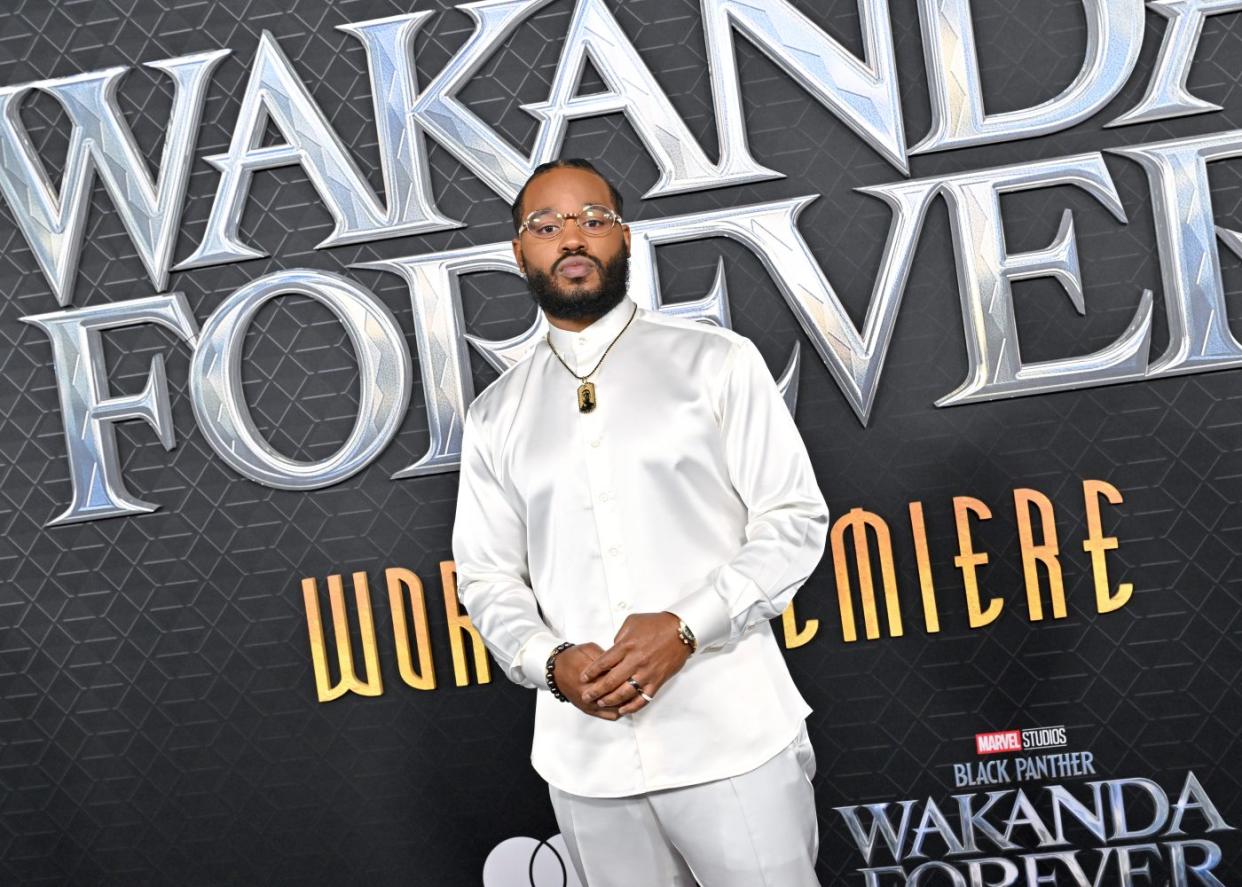
- Oops!Something went wrong.Please try again later.
- Oops!Something went wrong.Please try again later.
- Oops!Something went wrong.Please try again later.
In the midst of puzzling out the Rubik’s Cube demands of refashioning a “Black Panther” sequel without star Chadwick Boseman, who unexpectedly passed away from colon cancer on August 28, 2020, writer-director Ryan Coogler and his co-writer Joe Robert Cole realized something profound: they were really “making a water movie about grief,” Coogler explained during a recent Zoom interview with IndieWire.
It was fitting. “Because people would talk about grief, oftentimes saying, ‘y’all got hit with a wave.’ But the grief can carry you or you can feel like you’re drowning in it,” Coogler said. “So it makes sense that we were making this film where all of our characters get submerged in water at some point.”
More from IndieWire
Indeed, the movie’s most climactic moments involve water. And it’s remarkable that Coogler and his team didn’t allow themselves to flounder. Disney is releasing Marvel sequel “Black Panther: Wakanda Forever” on November 11, just four months after its original July date. (The first film arrived in February 2018, and went on to make over one billion dollars worldwide.)
Overcoming that grief and moving forward after loss, combined with the urge to honor and pay tribute to Boseman, drove the massive 200-page rewrite. “How do you honor Chad,” said Cole on Zoom, “while still maintaining the epic scope of the movie? We made the film personal, because it’s like a family. The idea of not having him recast meant that the narrative of his death had to be a part of the movie.”
Boseman had already approved of the sequel’s new Submariner-inspired Atlantis — Coogler’s idea of a parallel hidden culture, Mesoamerican-inspired Talokan, led by fleet-footed sea god Namor (Tenoch Huerta) and juxtaposed with the Wakandans. Back in 2019, after the long haul from the 2018 opening through the 2019 awards season (when “Black Panther” won three craft Oscars out of seven nominations, including Best Picture), Coogler sat down over lunch with Boseman.
“We were talking about what this next one would be,” the director said. “And, man, he just smiled from ear to ear as only he could: ‘Oh my gosh, I didn’t see that coming and that’s awesome.’ He was fired up about that aspect of it.”

Courtesy of Marvel Studios
But now the filmmakers’ daunting task was to dump their hard-won third draft and meld the Talokan sections of the script seamlessly with a new story focused on the mourning Queen Ramonda (Angela Bassett) and her only surviving child, Princess Shuri (Letitia Wright).
As always, Coogler likes to start in the middle of the action, as the film opens with tech-savvy Shuri frantically searching for the right chemical to cure her brother, who is dying in another room. Queen Ramonda delivers the devastating news.
The mother-daughter start of the movie is “a two-hander,” Coogler said. “You always want to put the audience in ground zero of wherever the conflict is, the closest character in terms of that narrative detonation. Shuri’s character makes sense. She had never known a day without her brother until he passed away. So, her identity as a person was lost, when she lost him. And, we wanted to investigate all of the characters in this film as they deal with not just grief and loss, but with the deaths of their identity. The characters are realizing what’s happening to them almost in real time, like when Queen Ramonda says, ‘I’m supposed to have all this power, but I’m a woman with no family.'” (Along with the usual crafts, there’s Oscar talk around Bassett’s powerhouse performance.)
Shuri feels rage, anger, and frustration, said Cole. “How do people deal with loss? Some people get very very angry. She’s so smart. She isn’t much into tradition, the spiritual elements of Wakandan culture. So everything’s more practical for her and pragmatic and scientific. So where do you go with that feeling?”
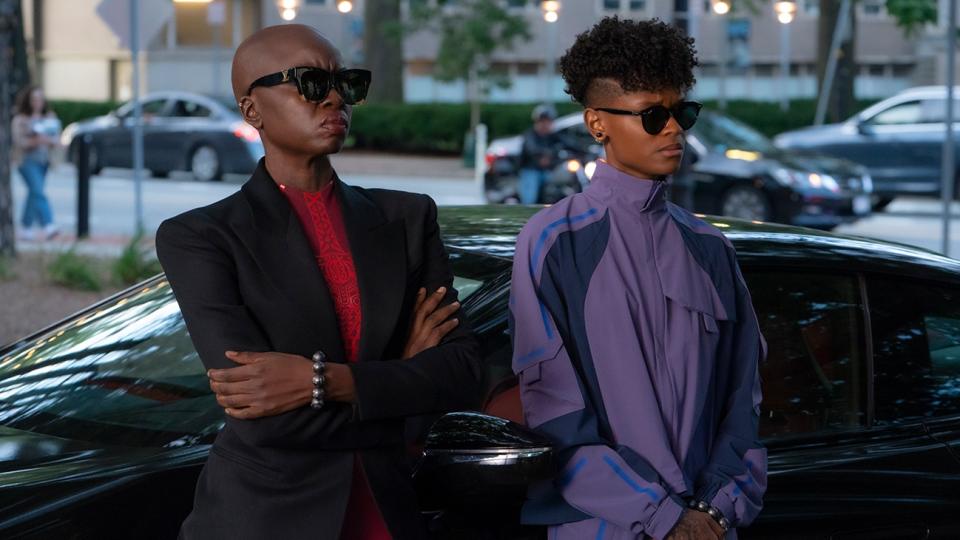
Courtesy of Marvel Studios
The filmmakers themselves were flummoxed and humbled by losing their star, number one on the call sheet. (When filming began, they began with number two.) “The guy that we’re doing it for isn’t here, you know what I’m saying?,” said Coogler. “Like, how do we pick up the pieces? It made sense to start there. And in that we were able to explore motherhood.”
Thus Wakanda is plunged into mourning rituals dominated by the color white. No surprise: the sets and costumes are stunning. These were among the last sequences filmed, as the writers caught up with how the story would change. Given that the underwater universe and its settings would still be in the movie, pre-production and filming began with all things Talokan. Marvel was excited about Talokan because “there’s going to be an audience for whom this is incredibly important,” said producer Nate Moore. “And for everyone else, it’s interesting to have an inspiration that’s real, that isn’t just made up.”
Namor is a fascinating character because the movie takes the time to reveal not only his power, but his complex backstory and vulnerability. “He’s an archetypal male character that you find in fiction and in myth,” said Coogler, “who are long-lived but still in a point of arrested development. He had to be this guy who’s very wise and exceptionally powerful, but also due to a trauma that happened to him when he was relatively young, his view of the world has crystallized. He’s a character who leans into his trauma, who owns it, and is comfortable existing in a state of perpetual grief.”
Shuri figures out that Namor is looking to protect his people. “He’s a ruler of a nation and he wants to keep his people safe,” said Cole. “She has an empathetic point of view as she understands his backstory.”
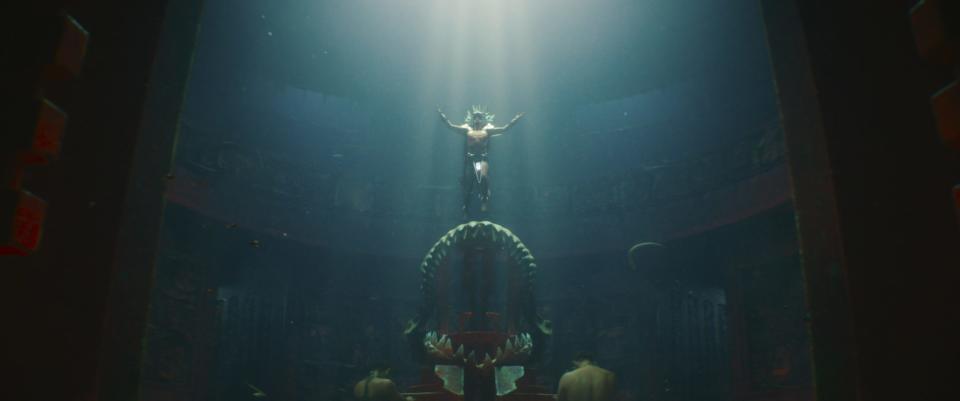
Courtesy of Marvel Studios
Casting the right Namor was crucial. “He had to be sympathetic and charismatic,” said Moore, “but be able to turn on intensity. He can’t just be a heavy, he had to have soulfulness.” Coogler interviewed a lot of actors of Meso-American descent, but he kepting remembering Huerta from his Sundance Directors Lab friend Cary Fukunaga’s “Sin Nombre.” “He’s just terrifying,” he said. “He plays a guy named Lil’ Mago who’s got tattoos all over his face.”
Coogler had assumed he was locally cast. “He’s really intense and then I saw the press conference, and I saw Tenoch was nothing like that guy,” he said. “He was playful and has a conscious point of view about racial politics in his home state of Mexico. So it just felt right in our conversations, that he was the guy.”
The Wakandan who tangles with Namor the most is Shuri, who takes an underwater tour of Talokan. Wright, Huerta, and others practiced swimming in deep water and had to learn to hold their breath in four underwater tanks. The production deployed a special underwater camera unit, as Coogler insisted on duplicating the rules of the real world as much as possible, even with “VFX side extensions,” said Moore, “the closer to the camera it was, the more real it was.”
The flooding of Wakanda was a major sequence, demanding a set big enough to handle the dumping of water tanks holding “hundreds of thousands of gallons of water,” said Moore, onto Nyong’o, Gurira, and their stunt people.
After knitting the script together, shooting the sections in Marvel’s Atlanta studios as well as on location in Boston/Cambridge (where Wright suffered an injury during shooting), and approving all the VFX — the movie’s budget clocks in at a hefty $250-million — editing “Wakanda Forever” into fighting shape was a challenge. The final film runs two hours, 41 minutes. One reason: Coogler leaves plenty of room between jam-packed action sequences for his many characters — popular ones returning from the first movie, from spy Nakia (Lupita Nyong’o) and warrior Okoye (Danai Gurita) to M’Baku (Winston Duke) as well as newbies like Namor — to express themselves.
“You hope that you give them all the real estate to let them do their magic,” said Cole. “It’s a contemplative movie. You’re not running to the next action sequence — I would argue that the action sequences become meaningful because of those moments where you get to know who the people are.”
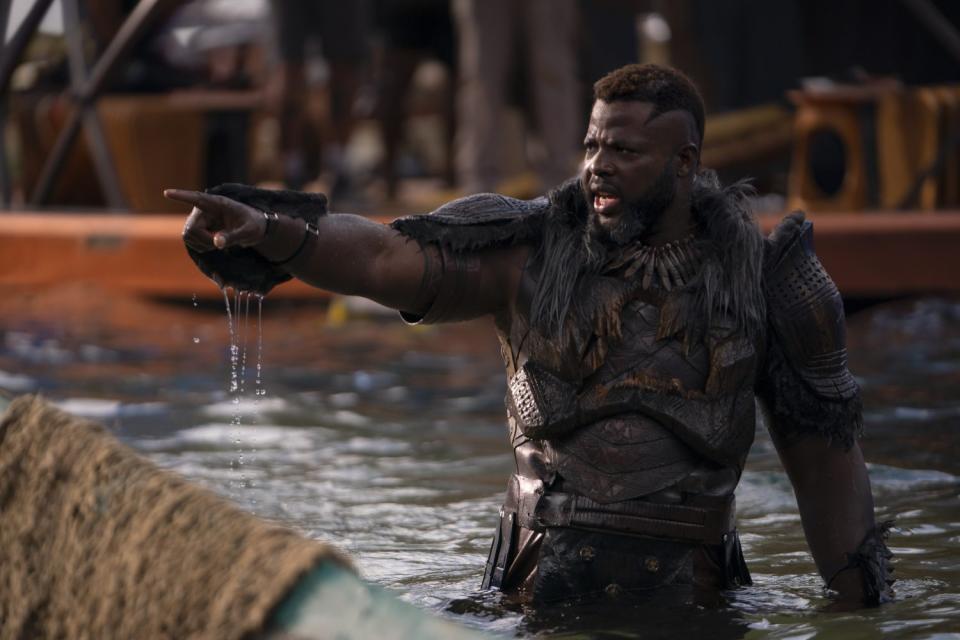
Eli Adé
Duke nabs almost twice as much screen time than he did in the first film, Coogler said. “Winston personifies that West African Uncle, who’s wise, but often pokes fun,” said Coogler. “We talk about his character as being like a walking stress test. He comes in, he’s trying to find a weak point, to make sure that everybody’s strong. And his scenes, particularly his scenes with Letitia, are some of the more beautiful ones I’ve ever been a part of.”
Editing room debates centered on how to cut back the action, which was expensive to execute but sometimes dragged things down. “We had to dance between the raindrops,” said Coogler. “But it was important to us that these characters who are warriors, soldiers, and scientists, are people with relationships. The film for me is a family drama, as much as it is all the other things. These characters, they work together, but some actually are family, and others have familial roles. These are people whose life is their work, whose life is protecting Wakanda, protecting the things that they love. These are people with jobs that never stop. Queen Ramonda is never off work. Mothers are never off duty. Those dialogue scenes had to be there, just like the action had to be there.”
The flashbacks of Namor’s childhood trauma were especially crucial to Coogler, said Moore. “There’s a cut in the movie when he’s telling his story to Shuri, a sense of horror on his young face. There’s no words. That is as powerful as anything else he does physically or any action, because you see the little boy beneath the man.”
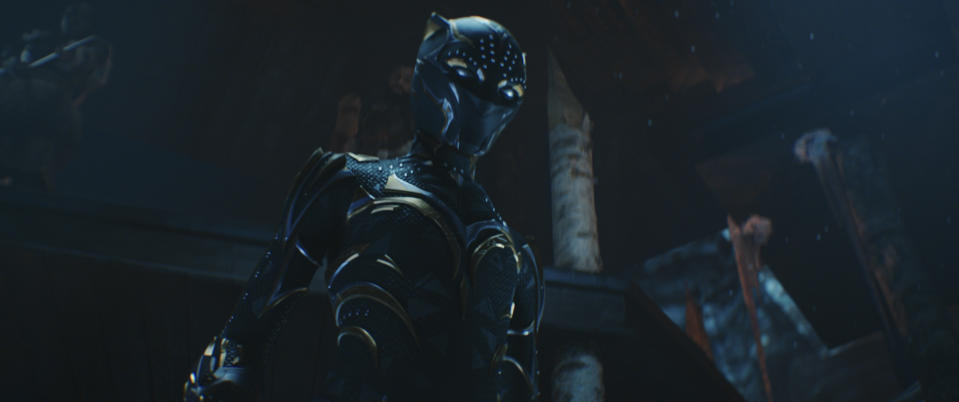
Courtesy of Marvel Studios
Back in May, Coogler mounted some private test screenings for close friends and family. “It was maybe 15 people that we knew would be honest with us,” he said. “It was a tight bunch. And we took a look at it and talked about it afterwards. We were trying to make something big that could contain a lot of ideas: a lot of themes, a lot of locations, a lot of worlds. There’s seven languages spoken in this movie. So my greatest anxiety was: did the film feel like a cohesive thing?”
Critics may not think so, but audiences will tell the final tale. Expectations are high, even if the movie isn’t scoring the raves of the original. Judging from enthusiastic fan response at the movie’s noisy premiere on October 26 on Hollywood Boulevard, box office predictions of a $600-million Black Panther wave could come true, marking yet another Marvel save for beleaguered theaters worldwide.
Meanwhile Marvel isn’t saying good-bye to Wakanda any time soon, and we can expect an eventual “Black Panther 3.” Coogler is developing several Wakanda series for Marvel and Disney+, and producing spin-off “Ironheart,” starring “Wakanda Forever” newbie Dominique Thorne as Riri Williams, while insisting that he does not know what he is directing next. He’s earned a little breathing room.
Walt Disney Studios Motion Pictures will release “Black Panther: Wakanda Forever” in theaters on Friday, November 11.
Best of IndieWire
Sign up for Indiewire's Newsletter. For the latest news, follow us on Facebook, Twitter, and Instagram.

